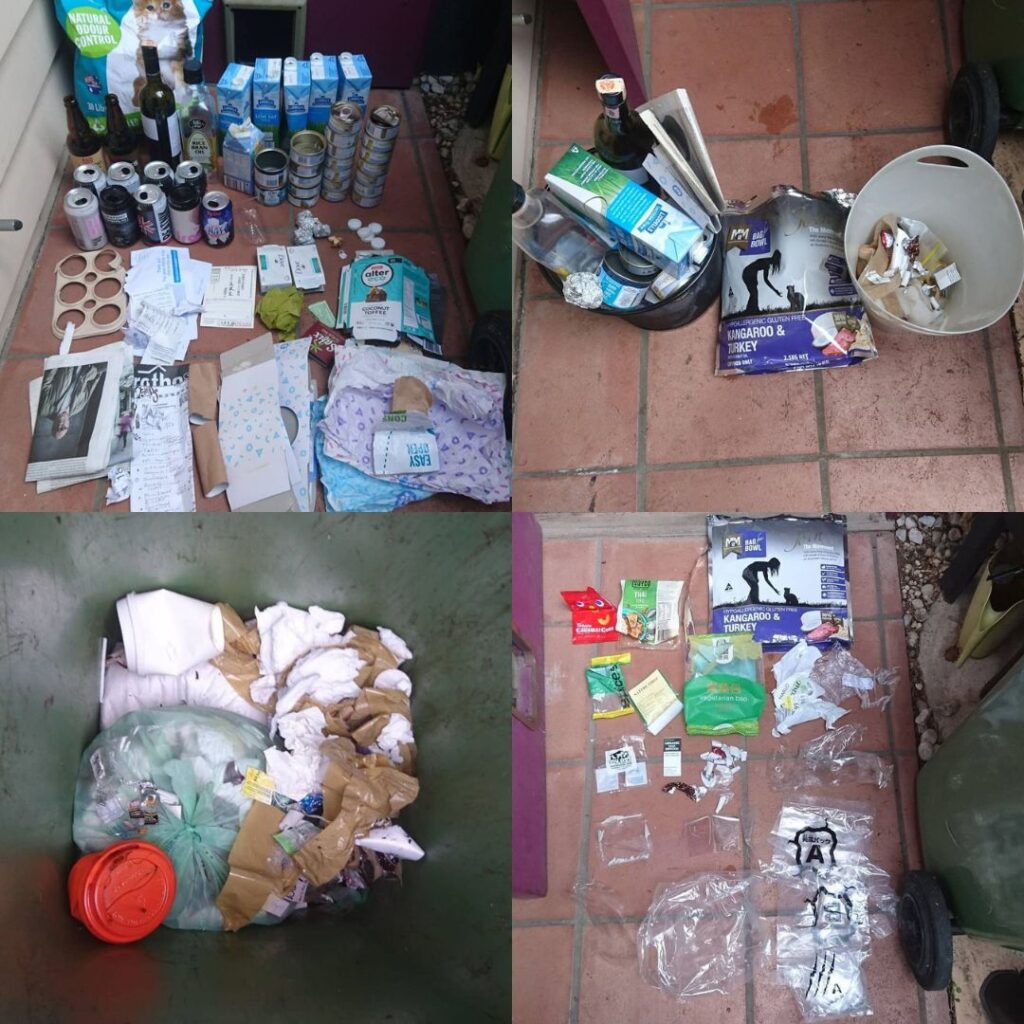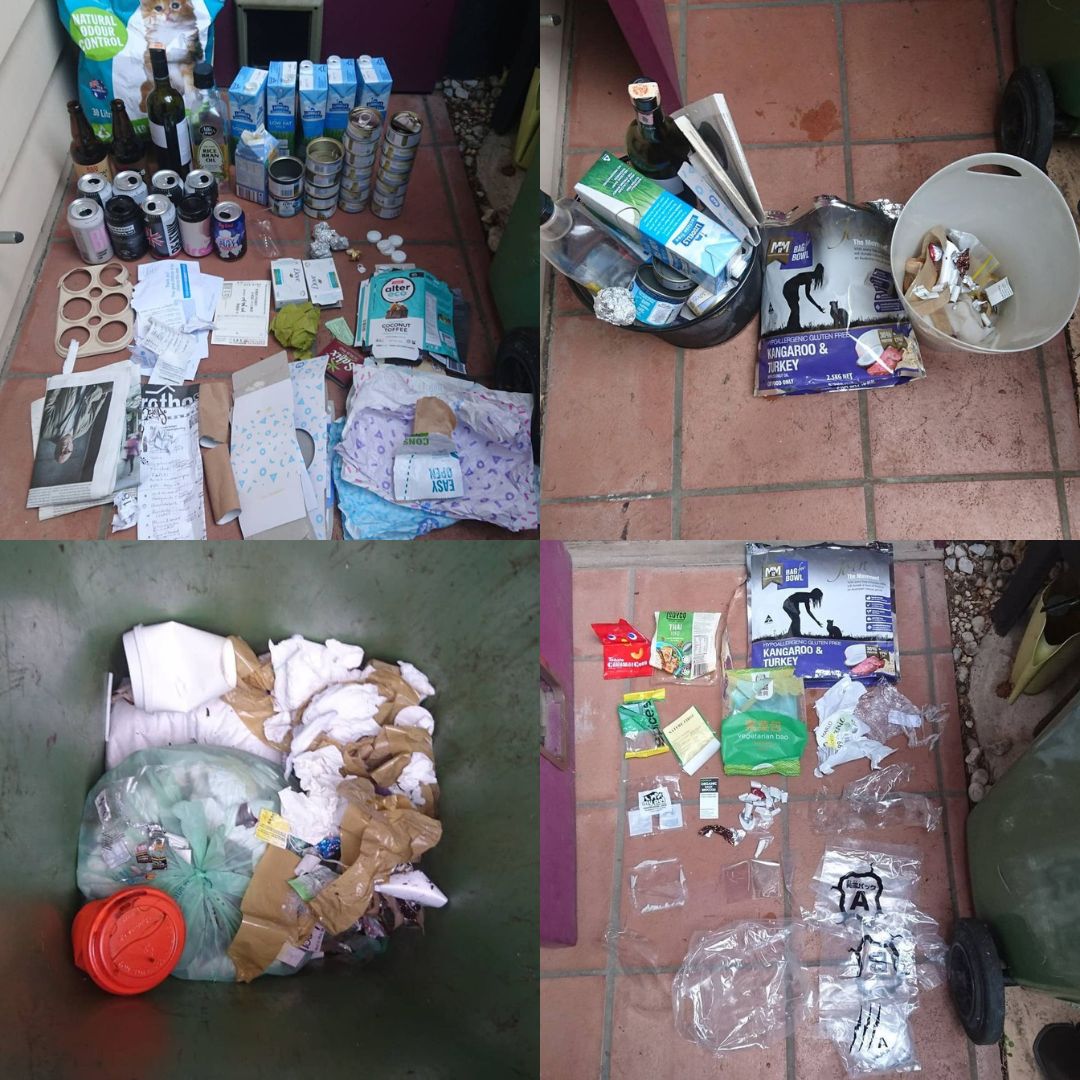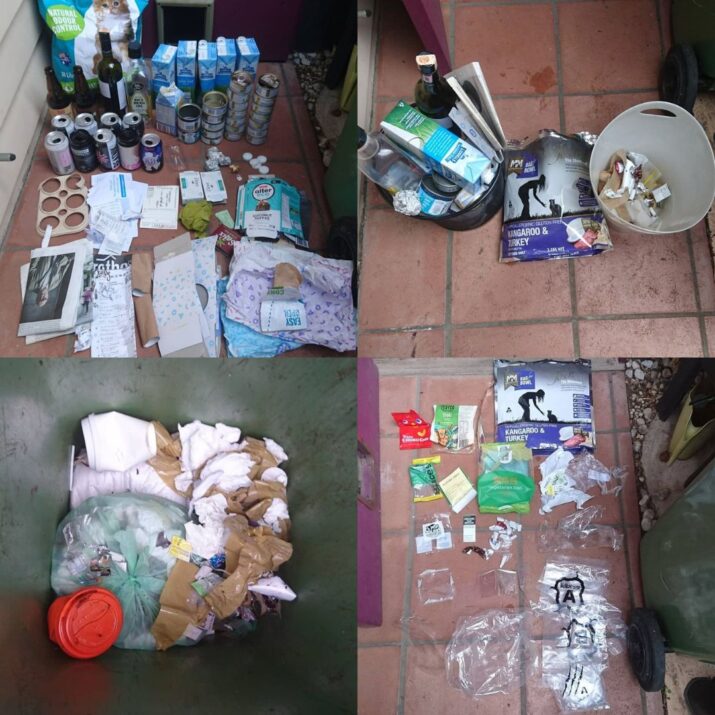
In past years I have used the month of July (and the motivation of Plastic Free July) to reflect and give myself feedback about the waste we generate in our household. Pictured here is our waste in separated waste streams from a couple of years ago. The waste streams are simply the various ways that it leaves the property – landfill bin, recycle bin, soft plastics (when it was being collected) as well as other waste that I’ve brought in to dispose of (litter collected on walks).
By doing a waste audit I am able to see what waste we are producing to then be able to inform how to best avoid and reduce this waste in future.
As I can’t control what happens with the recycling off-site (Council collection) and I’m concerned that much of it might be contaminated in the truck, sorted out and diverted to landfill, I aim to minimise the amount that goes into the yellow & green bins aswell as the red.
There are a number of items I collect seperately and send to various recycling streams. These include: egg cartons (shared in facebook groups); metal cans and tins (someone local collects for pocket money); beer can holders (taken to local craft beer shop);
There are also a variety of items that can be recycled through Terracycle and are collected at local businesses or organisations, including plastic lids, corks, pens, CD/DVDs & blister packs. These I’ve researched over the years of what can be collected & recycled, so now I have a recycle station in the garage.
If I look at the waste audit process through the lense of the Permaculture principles:
Observe and Interact – Putting it all out there: pulling everything out of the bin (as I have done in these photos) at a set time each year enables me to get a picture of what we are disposing of. It helps to see what are the bigger items to focus on, but also what I may havve forgotton what’s gone in the bin.
I usually set myself a time bracket, say 1 month from when I last put the bins out. If I don’t want to go through the landfill bin (because it’s mostly soiled cat litter) I’ll write down what does get put in there.
In the kitchen most waste goes to recycling or compost, so a small amount of “landfill” waste is collected in an open container, so I can look through it before added to the wheelie bin. If there is any thing that will get smelly or yucky it will go straight to the bin. Because we compost and very little meat is consumed in our house, the kitchen landfill bin is usually inert material.
Use & Value Renewable Resources and Services, Catch & Store Energy – I consider each item before it gets put in any bin, asking myself if any of it useful, able to be reused, upcycled or recycled in the home? Certainly finding new uses for things, or even delaying it’s eventual disposal (e.g. using worn shoes as planters, fabric scraps collected for stuffing).
Apply Self-regulation and accept feedback – It might be confronting and I might get annoyed that I have generated any waste where it was avoidable (e.g. soft plastics), it is good to remind myself that it is going to landfill/recycling offsite and I could do something about this. These thoughts and feelings also come back when I’m in the shop and considering buying something (e.g. icecream…) and I can do the research to find alternatives, which may end up being preferable. One example is trying to reduce the amount of beer bottles & cans in the recycling bin, which has motivated us to brew our own beer.
With a waste audit I can also discuss the items and ways to avoid them with other household members.
Produce no waste – This one may be self-explanatory, but how can I move towards this principle, and commit to producing no waste? It may difficult to get to the point of having no waste, but I can at least work towards it, reduce my impact, increase demand for alternative waste streams (Terracycle items) and share with others what I have learnt.
By observing, using & valuing and self-regulating through the audit process I break down the ultimate aim in to more manageable parts. I can focus on one item to eliminate at a time.

